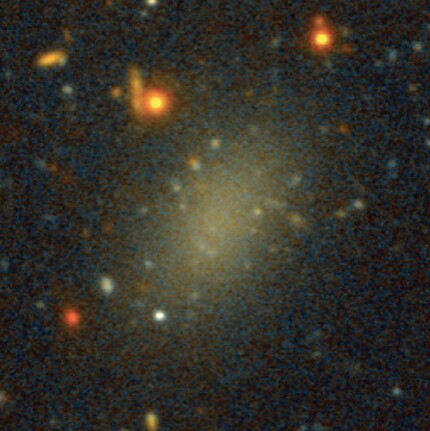A large galaxy made almost entirely of dark matter
DOI: 10.1063/PT.3.3356
Scattered among the galaxies of the Coma cluster are dozens of objects that are as large as the Milky Way but shine only 1/100 as bright. The stability of those ultradiffuse galaxies (UDGs) in the tidally disruptive Coma environment suggests that they may be held together by an unusually large component of dark matter. Now a research team led by Pieter van Dokkum of Yale University has measured the mass of one UDG, Dragonfly 44, and found a value similar to that of our Milky Way. Combining mass and luminosity determinations, the group concluded that Dragonfly 44 is 99.99% dark matter.

The group’s key measurement was of the UDG’s spectrum near the hydrogen-alpha absorption line at 656 nm. Because different stars in the galaxy move with different speeds, the nominal absorption line is broadened to a peak whose width can be related to the mass of the central, star-containing portion of the galaxy. In essence, greater mass yields stronger centripetal forces, a wider range of speeds, and a broader peak. The spectral measurements plus modeling yielded an estimate for mass in the dark-matter halo of Dragonfly 44 and thus for the galaxy’s total mass.
In addition to having a mass near that of the Milky Way, Dragonfly 44 encompasses nearly 100 globular clusters, an anomalously large number for such a dim galaxy. The large mass and cluster population of Dragonfly 44, says van Dokkum’s team, seem to rule out scenarios, plausible for lighter UDGs, in which the galaxy started as a conventional one that subsequently puffed up. Instead, the researchers argue, Dragonfly 44 is more likely a “failed” galaxy in which supernova explosions or some other process somehow squelched star formation at an early age. (P. van Dokkum et al., Astrophys. J. Lett. 828, L6, 2016, doi:10.3847/2041-8205/828/1/L6




